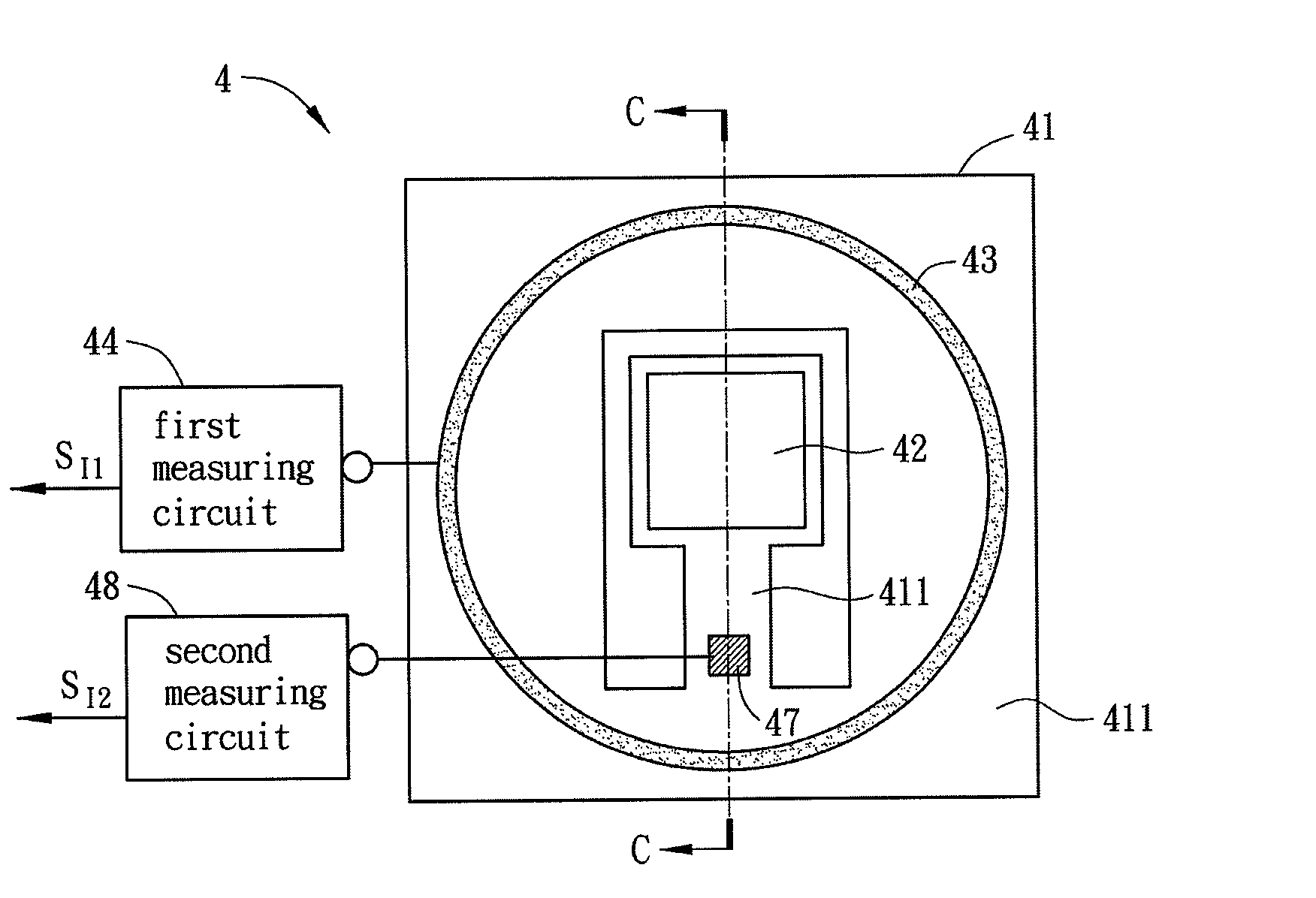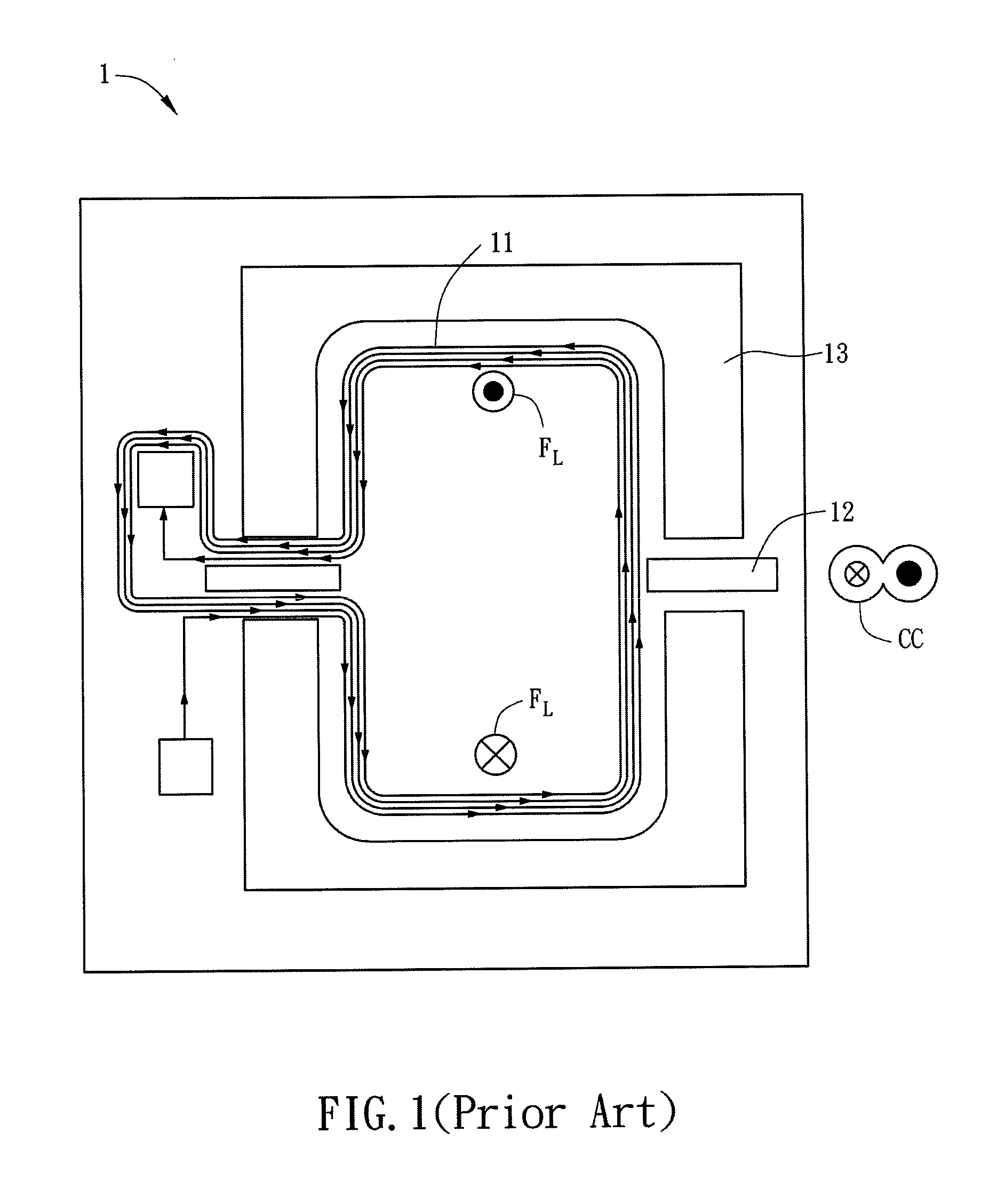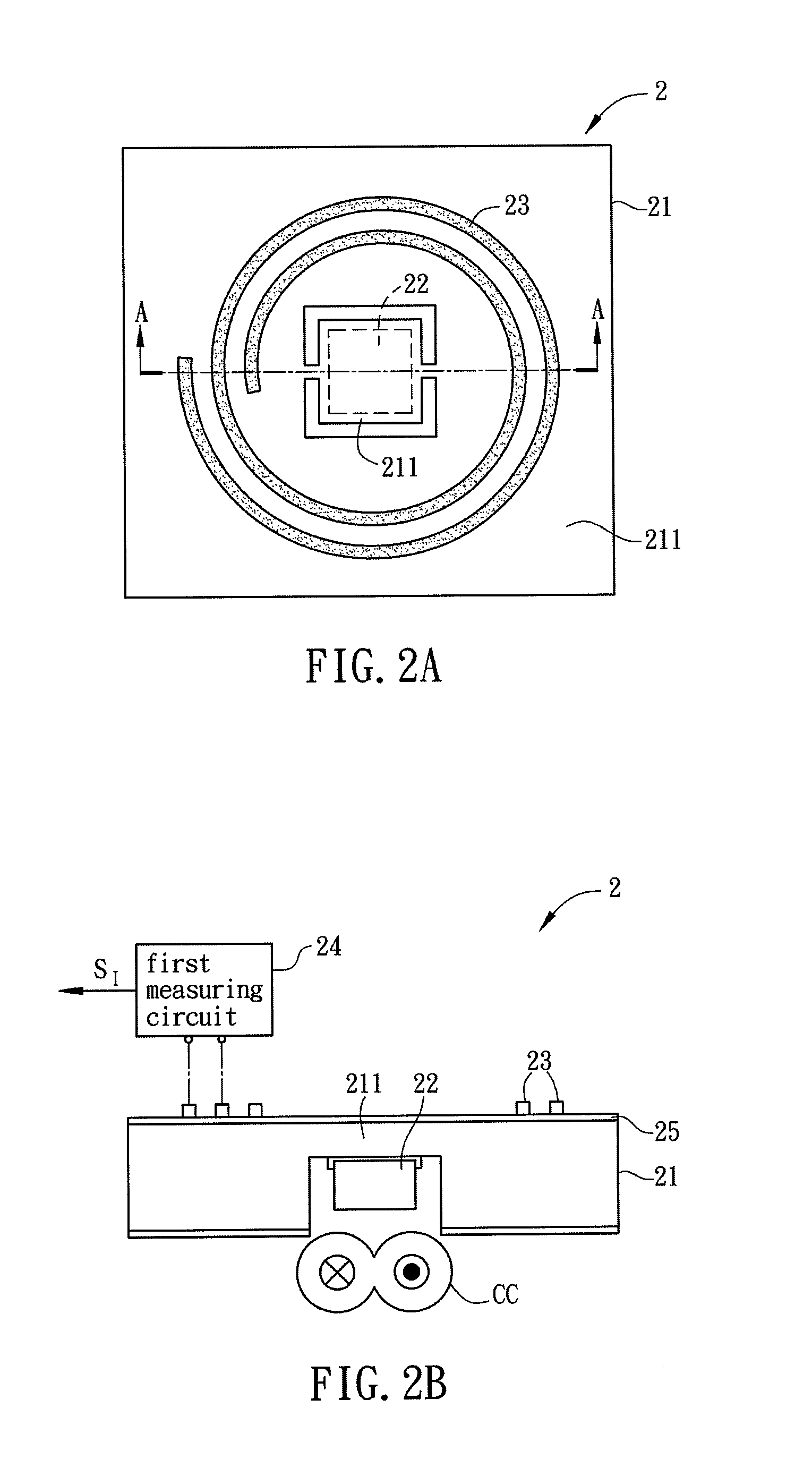Passive alternating current sensor
a passive alternating current and sensor technology, applied in the field of current sensors, can solve the problems of easy out of function and operation of current sensors, and achieve the effects of preventing the heat generated by the flexible structure layer, enhancing the sensitivity and facilitating the installation of the passive alternating current sensor
- Summary
- Abstract
- Description
- Claims
- Application Information
AI Technical Summary
Benefits of technology
Problems solved by technology
Method used
Image
Examples
first embodiment
[0031]FIG. 2A is a top view showing a part of a passive alternating current sensor 2 according to the present invention, and FIG. 2B is a sectional view of the passive alternating current sensor 2 along the line A-A of FIG. 2A. Referring to FIGS. 2A and 2B, the passive alternating current sensor 2 is used for sensing the alternating current of a current-carrying conductor CC. The passive alternating current sensor 2 includes a substrate 21, a magnetic body 22, at least one coil 23 and a first measuring circuit 24.
[0032]The substrate 21 has a flexible structure layer 211. In this case, the substrate 21 is a single-crystal silicon substrate, and the flexible structure layer 211 is a suspended structure layer, which contains micro-suspended structures. In practice, the flexible structure layer 211 containing the micro-suspended structures can be manufactured by bulk micromachining the single-crystal silicon substrate according to the MEMS manufacturing processes. The suspended structur...
third embodiment
[0038]To be noted, except the above-mentioned piezoelectric energy harvester, the piezoelectric element 37, the magnetic body 32, and the flexible structure layer 311 may be applied to a second measuring circuit for enhancing the sensitivity of the passive alternating current sensor 3. FIG. 4A is a top view of a passive alternating current sensor 4 according to the present invention, and FIG. 4B is a sectional view of the passive alternating current sensor 4 along the line C-C of FIG. 4A. In this embodiment, the passive alternating current sensor 4 comprises a magnetic body 42 and a flexible structure layer 411, and a second measuring circuit 48 connects to a piezoelectric element 47. The operation of the passive alternating current sensor 4 will be described hereinafter. When the magnetic body 42 is subjected to the magnetic field generated by the current-carrying conductor CC so as to generate a magnetic force, which is applied to the flexible structure layer 411, the flexible str...
PUM
 Login to View More
Login to View More Abstract
Description
Claims
Application Information
 Login to View More
Login to View More - R&D
- Intellectual Property
- Life Sciences
- Materials
- Tech Scout
- Unparalleled Data Quality
- Higher Quality Content
- 60% Fewer Hallucinations
Browse by: Latest US Patents, China's latest patents, Technical Efficacy Thesaurus, Application Domain, Technology Topic, Popular Technical Reports.
© 2025 PatSnap. All rights reserved.Legal|Privacy policy|Modern Slavery Act Transparency Statement|Sitemap|About US| Contact US: help@patsnap.com



